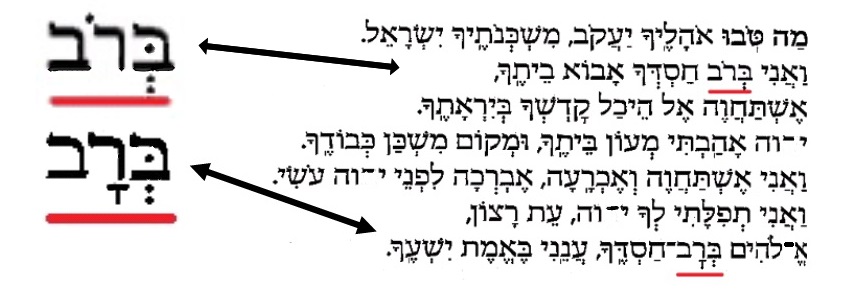A couple weeks ago we looked at the kamatz katan. And the question comes back why would we use that vowel instead of the standard “o” vowels (pronounced as in “toe”).
To review, this is a Hebrew vowel, the one which looks like a tiny “T” either with a very long stem or with a space between the flat top and a dot instead of a stem (as in a division sign without a top dot), or various other formats. The kamatz katan is pronounced “o,” as in “toe” (International Phoenetic Alphabet similar to o̞ — and we note that the symbol itself carries a kamatz). As a reminder, take a look below at the Ma Tovu, below. Both underlined words are pronounced the same:

When the “o” word is a part of a construct, the syllable becomes shortened, and thus it is spelled with the kamatz katan. Another way of identifying the kamatz katan is when a kamatz falls in a closed, unaccented syllable. Shortening happens when the main word is modified, such as “kol ha’etzim,” “all the trees,” or “ozzi,” “my strength.” Without the delineations of “the trees” or “my” (which is the suffix “-i”), we would not need a kamatz katan.
“Ozzi Vezimrat Yah,” God is my strength and might. Now, do we remember why the “z” is doubled in “ozzi”?